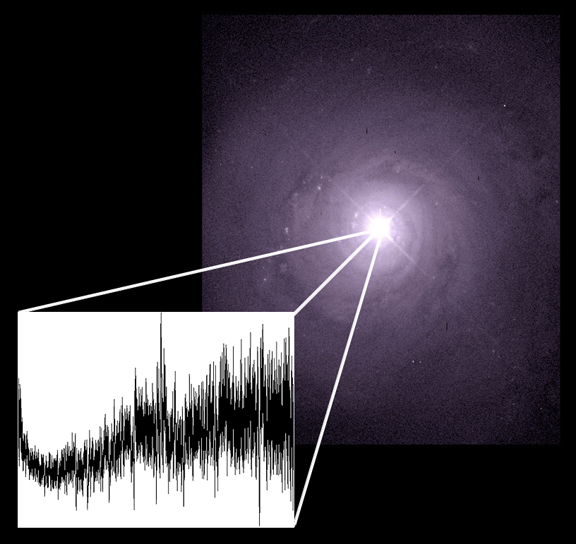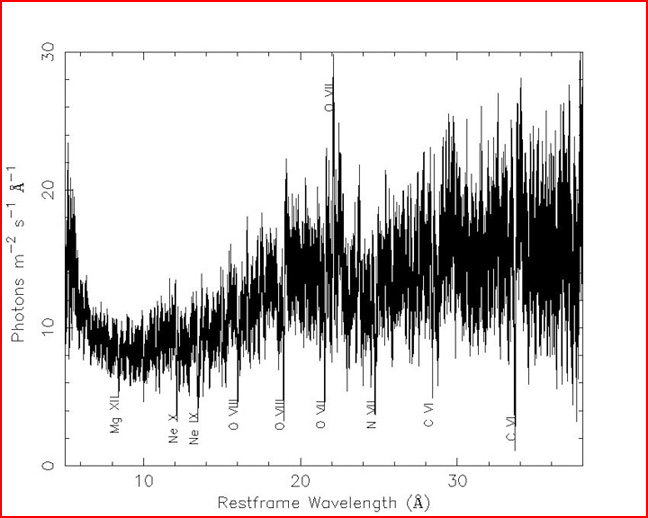|
|
||
 Credit: Optical: NASA/HST; X-ray: NASA/SRON/CXC/SAO  Credit: NASA/SRON/CXC/SAO |
||
|
pic of the day Links:
Society for
|
Aug 03, 2004 One of the basic assumptions of astrophysics today is that electrical forces play no part in cosmology because “you can’t get charge separation in space”. But x-ray images of space objects tell a different story. Standard phrases show up in astronomical lectures and debates, from elementary documentaries to the most advanced texts: "You can't get charge separation in space;" "The solar wind consists of ions [protons] flowing from the sun (with enough electrons to ensure neutrality;)" "... with the need for electrical neutrality paramount ...;" "The necessity for electrical neutrality then forces the details of the decays to be ...;" or even "Of course there's electricity in space, but it doesn't DO anything." The above spectrum was obtained by the Chandra orbiting x-ray camera in December of 1999. The subject is a tiny point-source of x-rays (a small, coherent cloud or the top of a coherent stream) embedded in the nucleus of an active spiral galaxy named NGC 4458 (upper image.) The elements in the x-ray spectrum are identified by their chemical symbols: O = oxygen, Mg = magnesium, etc. The roman numerals refer to the number of electrons that have been stripped from these elements. By consulting a periodic table of elements, you can calculate how many electrons are left. In this very active region of space, we see: Mg XII -- Magnesium with
all 12 of its electrons missing Among the common arguments against charge separation in space is the calculation that it would take more energy than there is in the universe just to separate all the electrons from the atoms in a single teaspoon of salt. From an Electric Universe point of view, this is begging the question. We aren't starting with a teaspoon of salt and trying to turn it into a plasma universe; we are starting with a plasma universe in which charges are already separated. So we need to consider theories that don't begin with the assumption that you can't get charge separation in space. We don't need theories that explain how imaginary objects like black holes can separate charges; we need theories that explain how charges combine to produce what we see. |
|
|
Copyright 2004: thunderbolts.info |
||
